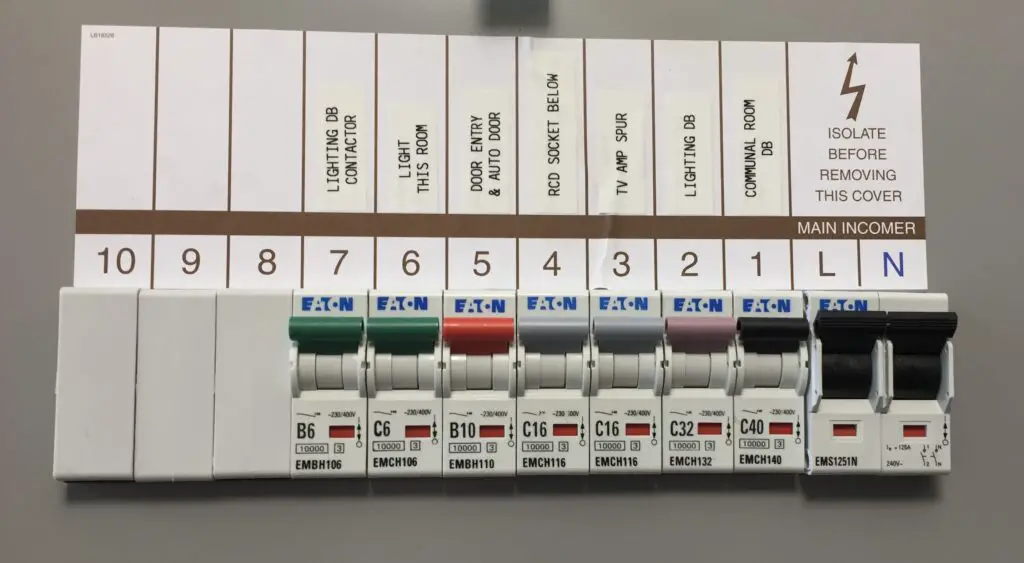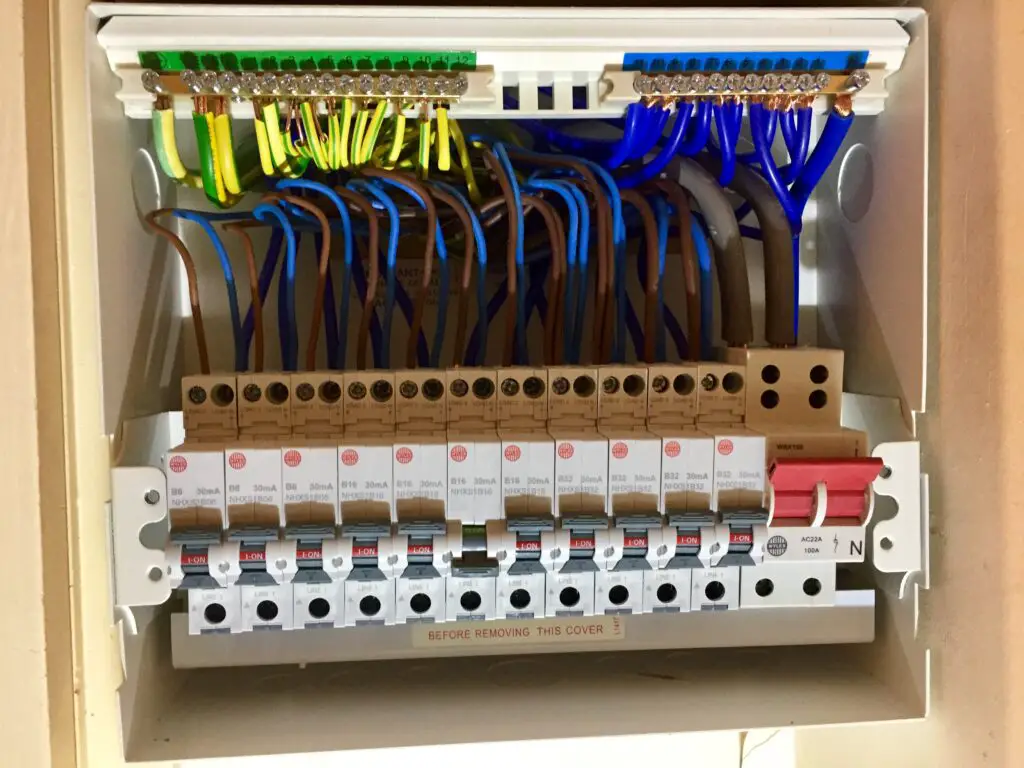In recent articles regarding electrical safety inspections, I referenced that a lot depends on the number of circuits within the home. This led a number of readers to ask, how many circuits are in a house? and Do houses have more than one circuit? These are good questions and the topic of how typical house electrical circuits are laid out is something I have overlooked explaining… until now!
We must start by saying that the number of additions and alterations that have been done plays a huge part in the number of circuits present. I’ve walked into one bedroom apartment expecting an easy time and have been met with a consumer unit filled with so many alterations and additions it looks like an electrical version of Frankenstein’s monster!
In this article, we’ll take a brief look at how many circuits are within a home, how the circuits are generally laid out and why we do things this way.

How Many Circuits Does The Average Home Have?
In a 3-bedroom detached home, I would be expecting to see around 8 circuits divided in such a way as to minimise disruption in the event of a fault occurring on one of the circuits. The size of the property and the number of electrical outlets has a large effect on the number of circuits within the home.
The table below shows a basic example of the number of circuits we might see in a 3-bedroom detached home. It may not be exact to your house but it gives you a little idea of what to expect.
| Circuit number | Circuit Designation |
|---|---|
| 1 | Cooker |
| 2 | Shower |
| 3 | Downstairs Socket Outlets |
| 4 | Upstairs Socket Outlets |
| 5 | Kitchen Outlets |
| 6 | Central heating boiler |
| 7 | Upstairs Lights |
| 8 | Downstairs lights |
Readers can see in the table above that the lights and the socket outlets are divided into separate circuits. As well as reducing the overall load on one circuit this is also done to help homeowners in the event of a fault, which we’ll touch on in a minute.
If you are wondering why the Cooker and Shower are on their own separate circuit in the example above, it’s because these appliances have a large energy draw and need their own circuits with larger cables and bigger circuit breakers in order to handle the load.
What Do We Mean by an Electrical Circuit?
We ought to briefly touch on what we mean by a circuit. An electrical circuit in the sense we are talking about here is classed as one which starts at the consumer unit (fuse board) on its own separate MCB and then heads off to power the designated electrical appliance.
For example, chances are that the upstairs lighting circuit has more than one lonely light fitting on it but we typically don’t run multiple circuits from the consumer unit to each light. We run one circuit and connect it to multiple light fittings and switches. You can read more about different types of light switches here.
The number of circuits we can have in a consumer unit is also governed by how many it was designed to take. The image below is a good example of a smaller consumer unit that has limited capacity for additional circuits to be added (we typically see smaller consumer units like this mounted in garages or outhouses)

As electricians, when we buy and install a consumer unit we install one with ‘spare ways.’ Spare ways means the capacity to mount additional new circuit breakers to add new circuits. In older homes, we typically see that the spare ways have been used up and no more can be added without a complete fuse board change.
How Are Electrical Circuits Divided Up in a House?
How the circuits are divided up in a home is a mixture of the electrcians professional knowledge and following the BS 7671 regulations that all electrcians must learn and follow. The regulations guide us as to how many lighting or socket outlets we can add over a given floor area.
The nuisance caused in the event of a fault is another important factor when dividing up the number of electrical circuits. As an example, if we added all the lights within the house onto one circuit not only would we be going against the regulations, but if that circuit were to develop a fault the whole house would be plunged into darkness!
In the example table above, we can see they are divided into upstairs and downstairs lights. If we developed a fault on the upstairs lights and that circuit no longer worked at least we would have lighting downstairs while we waited for the electrician to turn up.
Another perk we would have in the example above is that we would be able to plug lamps into the still-working socket outlets to give us some temporary lighting upstairs as well. Avoiding unexpected faults that cause sudden disruption is a great reason to have an EICR carried out!
Can Lights and Electrical Outlets be on the same circuit?
We don’t typically see electrical outlets on the same circuits as lighting. Occasionally an electrician will ‘fuse down’ part of the circuit in order to add a light but this is specific to the situation and something that only a qualified electrician taking into account multiple factors can carry out.
Lighting being on the same circuit as socket outlets could be a reason why your home fails its electrical safety inspection.
Final Thoughts
I’ve used the words ‘typically’ and ‘example’ a lot in this post. While I don’t love constantly putting those caveat words into the writing it is unavoidable when talking about the number of circuits within a home. I have tested hundreds of electrical installations over the years and perhaps the biggest thing they all have in common is the fact that you can never really know what you are walking into.
There are so many factors that come into play when designing and installing electrical circuits it really is something best left to the professionals for everyone’s safety. Whilst it’s great to have a basic understanding of how things work, getting a qualified local electrician to inspect and give advice on your specific installation is the only way to go!
